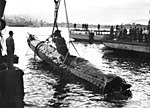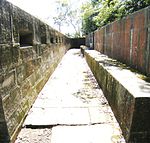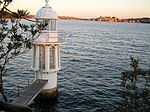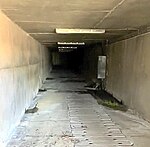Colonist (1861)
1851–1870 ships of Australia1861 in Scotland1861 ships1871–1900 ships of AustraliaHistory of Papua New Guinea ... and 9 more
History of West DunbartonshireHistory of the Solomon IslandsMaritime incidents in 1890Merchant ships of AustraliaSchooners of AustraliaShips built on the River ClydeShips sunk in collisionsShipwrecks of the Sydney Eastern Suburbs RegionUse British English from December 2013

Colonist was a general cargo and passenger schooner built in 1861 at Dumbarton Scotland by Denny & Rankine. It spent nearly 30 years plying the Western Pacific-based out of Sydney. It wrecked and later re-floated on the remote Elizabeth Reef 550 km from New South Wales, as well as being involved in the gold rushes. Its master was murdered before it was finally involved in a collision in Sydney Harbour, in which it was sunk.
Excerpt from the Wikipedia article Colonist (1861) (License: CC BY-SA 3.0, Authors, Images).Colonist (1861)
Sydney Sydney
Geographical coordinates (GPS) Address Nearby Places Show on map
Geographical coordinates (GPS)
| Latitude | Longitude |
|---|---|
| N -33.855916666667 ° | E 151.23863333333 ° |
Address
Eucalypt Lawn
2000 Sydney, Sydney
New South Wales, Australia
Open on Google Maps










